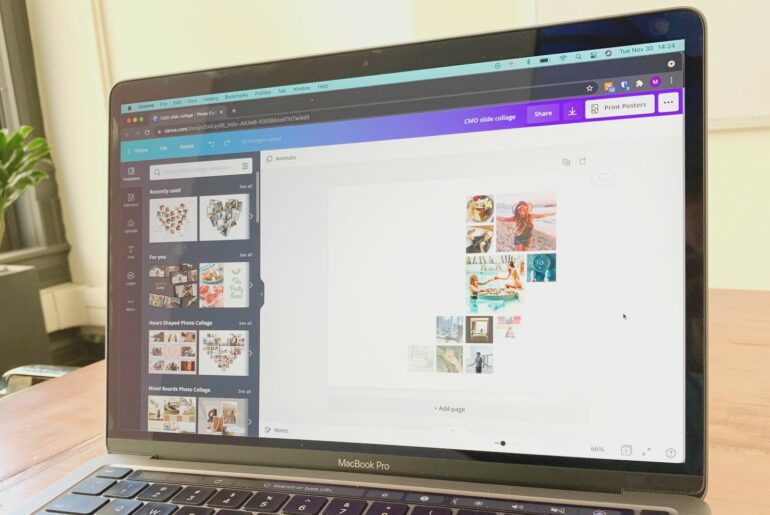We are frequently asked, “Does paying for UGC make it more legal?” The idea of receiving beautiful, high-quality content for free can seem questionable in a world where many marketing engines are powered by over-priced influencers. Rather than paying to activate a single person of influence, implementing a UGC strategy creates opportunities for any customer, employee, or advocate to make something engaging.
We believe that everyone is an influencer. People exert influence on their social networks the minute they add a single connection and share a piece of content. TINT helps brands discover amazing content from these micro-influencers and amplifies their power.
Does paying for UGC make it more legal?
As simply as possible, NO. Paying for UGC may assuage lawyers who are unfamiliar with the nature of digital communities and content creation, but the reality is that a content agreement is valid with or without payment. You should always have legal counsel develop your terms of service. You may also want to have different terms of service depending on the region you’re obtaining content from, e.g. the United States vs the European Union. But a properly deployed rights licensing agreement, when deployed in combination with a Rights Management system, will protect a brand from liability, save time, and increase content output (marketing productivity).
Is it better to pay?
Many attorneys may prefer to see a creator being paid because it clarifies the “terms of consideration” in the relationship between content creators and the brand. This sort of reading may have been true in the past, but with the advent of the membership economy and social media creating entire ecosystems of creators online, this can be a questionable perspective to have.
Transactional Customer Relationships
Before paying for UGC you should always consider whether you want a transactional or a reciprocal relationship with your customers.
A transactional relationship is focused on the short-term. It seeks immediate results and instant gratification. In Forbes, customer experience futurist Blake Morgan advocates for a move from transactional to meaningful (reciprocal) relationships.
A relationship between a creator and a business changes when money exchanges hands. This creates that transactional relationship which not only shifts expectations of conduct, it can also increase liability for any future content produced by that creator.
Poisoning the Well
Let’s say you pay, or otherwise compensate someone, for a piece of content. That payment creates a transactional relationship between the “influencer” and the company. Any subsequent content is likely to be considered “influenced” by the monetary transaction and thus fall under the Federal Trade Commission (FTC) Influencer Disclosure Guidelines.
It took time for federal regulation to catch-up with the swiftly changing world of social media. Now, the FTC is running with guns blazing to ensure that influencers and brands are following the rules. They consider “influencer” relationships to be akin to celebrity endorsements. If you are paying for content from any “influencer”, regardless of the size of their following, you are expected to meet these criteria:
- A public disclosure that they were compensated.
- Avoiding vague terms like “Ambassador”.
- Record-Keeping Standards
The FTC clearly states, “Don’t assume that a platform’s disclosure tool is good enough.”
Violation of these FTC rules can begin enforcement proceedings. Currently, FTC enforcement includes 10+ years of recordkeeping, six-figure fines, and limitations on the way that a business can engage with social media in the future.
Beyond the FTC, in 2019 there were 4,401 complaints against “influencers of all sizes” made to the Advertising Standards Authority (ASA). 8,881 advertisements had to be amended or withdrawn as a result of ASA probes.
The path forward is clear. Paying for UGC opens you up to new scrutiny and liability.
Can I use a native embed instead?
Native embeds, using a site’s built-in embed code generator, has been considered an easy workaround when dealing with rights management. This all changed in 2019 when a lawsuit between a photographer and a collection of publications including Time INC, the Boston Globe, and Vox was settled out of court. The point of contention was a photo pulled from Instagram using the native embed feature. Particularly for large organizations, rights management is always better protection than assuming the EULA of the social platform will stop lawsuits. A social media company’s user agreement is designed to protect them, not the businesses that use them.
Read more about the case, UGC rights, and embedding social.
Creating Reciprocal Relationships.
The internet has made the creation and distribution of content easier than ever. Social Media and mobile content tools allow anyone with a phone or tablet to become a creator. Brands should build for the future and focus on creating long-lasting reciprocal relationships with their customers.
The Power of Us
In “Pre-Suasion: A Revolutionary Way to Influence and Persuade” Dr. Robert Cialdini explores the concept of unity as one of the most powerful tools of influence. Creating a sense of “us” or “we” speaks to the deeply human need to belong. Humanity tends to be tribal. We like to connect with people who act, believe, or feel the same as us. We like to connect to people who enjoy the same flavor soft drink or cheer for the same sports team.
Marketers are using this perspective to create brand communities. These groups are people united by a brand. They offer feedback, perspective, and often create amazing content with little expectation of compensation beyond that sense of unity. A reciprocal relationship will turn these brand communities into content generation machines if planned properly. It takes more time than simply paying off an influencer, but the results are long-lasting.
Creative Commons and Open Copyright Licenses
In 1998 the Copyright Term Extension Act was passed, extending the lifespan of copyrighted works. Stanford Law Professor Lawrence Lessig, in partnership with other lawyers and creatives, created a nonprofit organization called “Creative Commons”. The idea behind “CC” was to create a set of public licenses that would allow creators to keep their copyrights while offering more flexible terms to other creatives or brands who looked to use their content.
Today, 1.6 Billion pieces of media across 9 million websites are under the creative commons license. CC has been adopted by governments and institutions including a number of states and agencies in the US, Canada, the UK, and United Nation member countries. According to Creative Commons, this has helped “us realize the full potential of the internet.”
There is already an entire digital world of open content creation that only requires agreement to their terms of service. Odds are you’re already using a tool or service that has Creative Commons content incorporated. Brands should use the momentum of this movement to create new relationships with creators, while still protecting themselves with globally recognized terms of service.
Rights Management
At TINT, we believe the rights management piece is crystal clear. The process is scalable and the same across all platforms.
- Connect with the creator. Reach out and connect with the creator. Let them know that the content they’ve made is amazing and that you’d like to share it with a greater audience.
- Clarify Use. Share terms of service that licenses the piece of content while letting them retain their original copyright. Be clear on what possible uses it will have including print, digital, and video.
- Receive Permission. Get their opt-in to form that important reciprocal relationship.
- Check Copyright. Trust, but verify. Use a tool to run copyright detection to ensure the creator is the original publisher of the piece.
- Document Everything. Keep documentation on everything including where the original post was found, usernames, when a content request was sent, when the user opted-in, and any additional information that could be useful.
- Respect the Content. Appreciate the quality of the content by using it across channels.
- Be Grateful. Thank the creator, follow them back, and watch as they’re likely to create even more amazing content for you.
TINT has worked with over 5,000 brands around the world. We have a full-funnel content rights management solution that protects you. TINT integrate with your favorite solutions like Hootsuite and Hubspot, saving time and increasing productivity. Talk to one of our UGC experts today and let us show you how rights management works for companies of all sizes.




